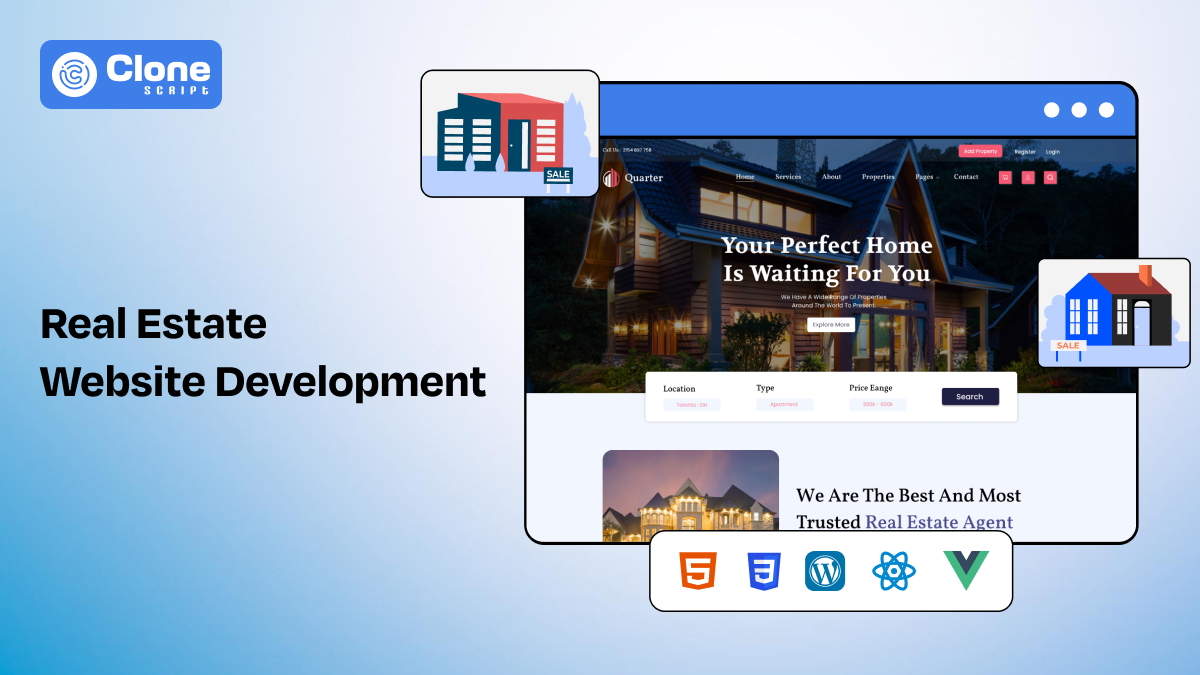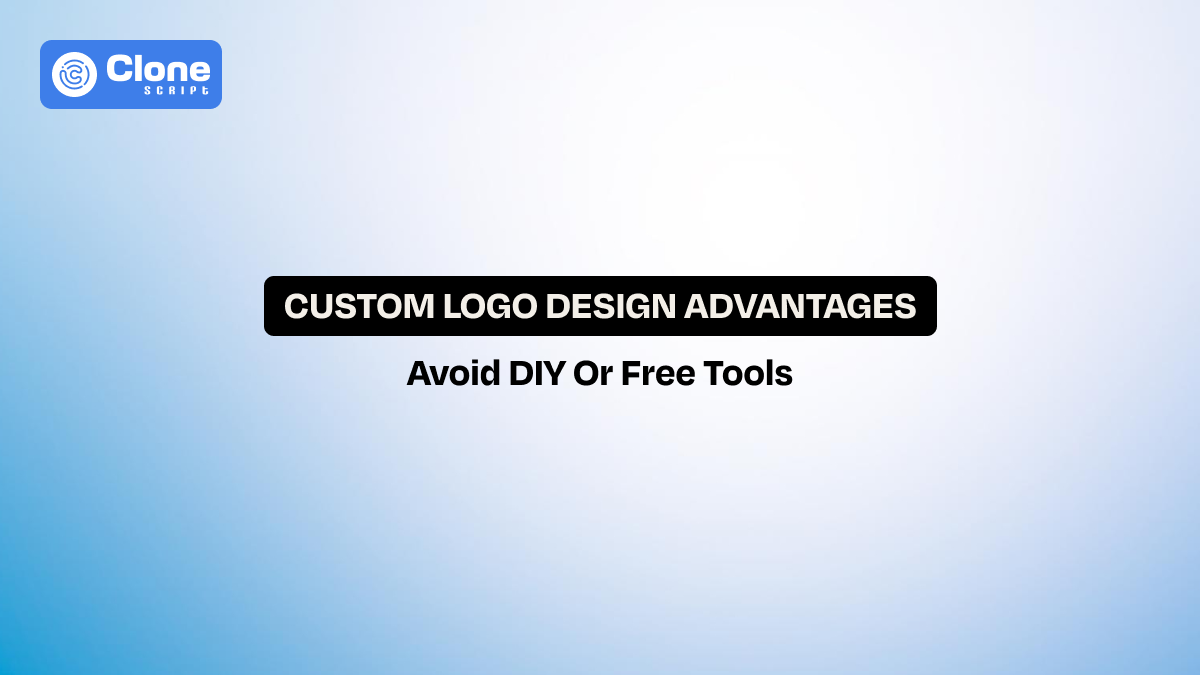How to Build a High-Converting Real Estate Website
Most real estate websites don’t sell; they sit. Outdated layouts, clunky mobile views, and lifeless listings silently drive potential buyers away. In a market where 90% of homebuyers start their search online, your website must do more than exist; it must convert. Ask yourself: Is your site generating leads or just collecting dust?
If it’s not fast, user-friendly, and built for today’s buyer journey, you’re missing out on serious business. A modern real estate website should work like your top sales agent, remain always online, always responsive, and always converting.
In this guide, we’ll walk you through exactly how to build a high-converting real estate website, using modern tools like HTML templates with CSS, Bootstrap layouts, Figma web design, IDX integration, and more.
Start with the basic understanding.
Why Most Real Estate Websites Fail (And How Yours Can Win)?
Most property websites suffer from a few predictable issues:
-
Outdated layouts that don't adapt to modern devices
-
Poor usability that frustrates potential buyers. In other words, they don’t follow UI design principles.
-
Lack of IDX integration, meaning listings are limited or outdated
-
Weak SEO that keeps your site buried in Google search results
The solution?
Build your real estate website with a strategic combination of design, code, and conversion-focused UX from the very start. That’s where using professionally built website templates in HTML, Bootstrap website design templates, and Figma for website design can make all the difference.
Let’s explore the possible solutions step-by-step.
1. Choose the Right Real Estate Website Platform
Before you dive into design or features, choose a platform that aligns with your business needs, technical resources, and long-term goals. Your platform affects everything: performance, SEO, maintenance, and flexibility.
Popular real estate website platforms include:
-
Static HTML/CSS: Lightweight, fast, secure, and easy to host. Perfect for developers or agencies using HTML sample web page templates.
-
CMS like WordPress: Popular for blogs and non-tech users, but fluffy and slower unless optimized well.
-
Custom builds with frameworks (React, Vue): Powerful and scalable, but require strong development teams.
If you're aiming for performance and full control, building your website from a template using a clean HTML page design is ideal. These templates often support integration with APIs, real estate data feeds, and can be customized to reflect your brand and layout preferences.
2. Use a Professional Realtor Website Template
Forget building from the start. It’s time-consuming, costly, and risky if not done properly. Instead, use a professionally designed realtor website template that gives you the foundation for a stunning, conversion-driven site.
These templates are built with the real estate website design best practices in mind and include:
-
Listing grids with filters
-
Property details pages
-
Lead capture forms
-
Map integrations
-
Agent bios and testimonials
You can find these in marketplaces offering website template collections, or niche design kits like:
-
Bootstrap templates
-
Dash UI components for clean dashboards
-
Figma for website design with customizable components
With the right top web template, you’ll spend more time refining and less time debugging layout issues.
3. Focus on Mobile-First and Responsive Website Design
More than 70% of property searches happen on mobile devices. If your real estate site isn’t responsive, you’re not just losing traffic; you’re damaging your brand credibility.
A responsive website adapts to any screen size and provides a seamless user experience. But it’s not just about shrinking content, it’s about optimizing every interaction for smaller screens.
How to implement mobile-first design:
-
Start designing in Figma with mobile breakpoints
-
Use layouts in HTML with Bootstrap’s fluid grid system
-
Keep menus accessible with hamburger navigation
-
Ensure text, forms, and images scale naturally
-
Test touch interactions: buttons, swipes, scroll
Using Bootstrap website design templates ensures that responsiveness is baked in. From HTML page templates with CSS to mobile-friendly site layouts, these frameworks help deliver consistent performance across all devices.
4. Integrate IDX and Property Listings
Your real estate website needs to do more than look good. It needs to display up-to-date listings that potential buyers and renters can interact with.
That’s where IDX integration (Internet Data Exchange) comes in. It allows you to connect with your local MLS database and automatically populate listings on your website.
Benefits of IDX integration:
-
Real-time listing updates
-
Advanced search filters (price, bedrooms, property type)
-
Location-based search (map view)
-
Detailed listing pages
-
Better SEO through increased content volume
Many property website templates are IDX-ready or can be configured to support popular third-party IDX providers like iHomefinder, Showcase IDX, or Realtyna. Pairing IDX with a strong web page UI design creates an engaging and informative browsing experience.
5. Optimize for Real Estate SEO
Having a beautiful website won’t help if no one finds it. To attract traffic, your site needs to be search engine optimized, especially for local, intent-based queries.
Here’s how to boost your real estate SEO:
-
Use geo-targeted keywords
To attract local customers to your real estate website, implement a local area name including keywords throughout the platform. Perform proper keyword research using tools like Ahrefs, Wordstream, and Moz. Example: “Luxury villas in South Delhi” or “2BHK flats near JP Nagar, Bangalore.” This will help search engines to show your site to a particular user for a query being asked.
-
Optimize page structure
Search engines like Google always prioritize the best user experience. By using semantic tags (H1, H2,..., H6) and structured data, markup for property listings will appear in the search results. The image alt text also enhances the readability of visuals when the user’s internet connection is slow. This is considered a good practice for on-page SEO.
-
Write location-specific content
To rank your property website on Google, you have to write content on neighborhood guides, school districts, commute times, and local attractions. For example: “How to buy your first home in Pune” or “Top 5 gated communities in Chennai.” This kind of content targets buyer intent. It’s better to get a professional blog writing service if you don’t have an expert writer for your brand.
-
Improve technical SEO
Optimizing a website's speed for fast load times is a ranking factor to get a better SERP rank. With clean code and mobile responsiveness, your real estate website will appear on the first page where most potential buyers click.
But can we say all of these elements will be stuffed in a single solution?
We are talking about using HTML pages designed with lightweight code gives you faster load times and better indexing. It’s an advantage over bulky CMS-based sites.
6. Add Conversion-Boosting Features
A high-converting real estate site doesn’t just display listings. It guides users to take action.
Here’s what to include:
-
Lead capture forms: Place forms on key landing page designs like listing details, agent pages, and the contact section. From here, you will get the attention of property buyers and start the lead nurturing.
-
Sticky CTAs: Buttons like “Book a Viewing” or “Request Info” that remain visible as users scroll. This helps users to click on it and access relevant information.
-
Live chat or WhatsApp integration: With AI chatbot integration to the website can work around the clock and offer real-time engagement with minimal delay.
-
Exit-intent popups: Offer downloadable guides or consultations before users leave. Don’t make it too stuffy with visuals and text blocks. Only design properly formatted banners containing minimal text and a CTA.
-
Favorites/Compare tool: This lets users save or compare listings for decision-making on different criteria like amenities, carpet area, price, facilities, and view.
Design these elements using modern dash UI/UX principles and approach clean, simple, and distraction-free. Templates built with Figma web design come with ready-to-use conversion components.
7. Build Trust with High-Quality Content and Testimonials
Trust is everything in real estate. Your website must show that you’re credible, experienced, and client-focused.
How to build trust through content
-
Client testimonials: This could be in written and video reviews to establish proof. Once a new user lands on your site, they will acknowledge the service you offer to previous buyers.
-
Agent profiles: Add bio, qualifications, sales stats, and personal story. It guides visitors to make informed decisions on property buying.
-
Case studies or success stories: Highlight homes sold, challenges overcome, and client satisfaction. To create credibility for your real estate business, this is important.
-
Educational blog posts: To capture the lead from buyers who are looking to purchase a property online, the website blog posts work. Write blogs on buyers’ guides, pricing trends, and tax tips while buying a real estate property.
-
Neighborhood spotlights: Showcase your local expertise with deep insights into area amenities. It attracts local buyers searching for the best property.
Use visual components from your realtor website template to highlight these stories. A well-designed UI of a website featuring content sliders, testimonial blocks, and bio cards keeps users engaged and builds an emotional connection.
8. Track and Improve with Analytics
Once your site is live, don’t just set it and forget it. Continually track performance and optimize your user journey.
Tools to use:
-
Google Analytics – Understand user behavior and traffic sources.
-
Google Search Console – Monitor keyword performance and indexing issues.
-
Hotjar or Microsoft Clarity – Watch recordings of real user interactions.
-
CRM or lead tracker – Analyze where and how users convert.
What to track:
-
Bounce rates on listings or landing pages
-
Conversion rates on contact or booking forms
-
Search behavior within listings
-
Drop-off points in user journeys
Use this data to refine your HTML sample web page, redesign weak CTAs, or adjust SEO strategies. Even the best website templates need real-world feedback to evolve and perform.
Conclusion: Your Website Should Work as Hard as You Do
A high-converting real estate website isn’t just a digital storefront. It’s a lead machine, trust builder, and conversion engine all in one. Done right, it helps you sell more properties, faster.
To recap:
-
Use clean, responsive website templates in HTML
-
Start with a strategic platform and optimize for performance
-
Design for mobile-first and usability
-
Add powerful features like IDX integration and smart forms
-
Invest in local SEO and long-form content
-
Build trust with authentic testimonials and agent bios
-
Track everything, analyze user behavior, and improve constantly
When your real estate website feels like a guided experience, not just a listing dump, you win hearts, leads, and sales.
 BTC - Bitcoin
BTC - Bitcoin
 USDTERC20 - USDT ERC20
USDTERC20 - USDT ERC20
 ETH - Ethereum
ETH - Ethereum
 BNB - Binance
BNB - Binance
 BCH - Bitcoin Cash
BCH - Bitcoin Cash
 DOGE - Dogecoin
DOGE - Dogecoin
 TRX - TRON
TRX - TRON
 USDTTRC20 - USD TRC20
USDTTRC20 - USD TRC20
 LTC - LiteCoin
LTC - LiteCoin







